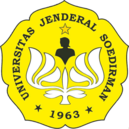Acquisition of Phonological Competence in Five-Year-Old Mentally Disabled Children
Abstract
This research aims at describing language acquisition particularly at the level of phonological competence attained by mentally retarded children. The data in this research are gathered from children, who is mentally retarded, at the Panti Asuhan Yatim Sejahtera Banjarnegara. These data include vocabularies which are primarily nouns, for instance the name of transportations, fruits, and buildings. This is a descriptive-qualitative research of which steps were giving stimuli to the targeted child to pronounce some vocabularies. These pronounced-vocabularies were then employed in this research to further be examined. In order to discover the stages of language acquisition specifically at the level of phonological competence, the data will be analyzed with phonetic syllabus. Based on the result of the analysis, it indicates that the language acquisition of this mentally disabled child phonologically pronounced vocoid [i], [I], [e], [«], [a], [u], [U], [o], [¿], and [\]; and contoid sounds [p], [b], [t], [d], [k], [g], [c], [j], [h], [l], [m], [n], [÷], [w]; while sounds such as [Ö], [s], [r], [z], [q], and [v] were not able to be pronounced. In short, the phonological stage of language acquisition by mentally disabled child was obtained but it was not fully acquired.This research aims at describing language acquisition particularly at the level of phonological competence attained by mentally retarded children. The data in this research are gathered from children, who is mentally retarded, at the Panti Asuhan Yatim Sejahtera Banjarnegara. These data include vocabularies which are primarily nouns, for instance the name of transportations, fruits, and buildings. This is a descriptive-qualitative research of which steps were giving stimuli to the targeted child to pronounce some vocabularies. These pronounced-vocabularies were then employed in this research to further be examined. In order to discover the stages of language acquisition specifically at the level of phonological competence, the data will be analyzed with phonetic syllabus. Based on the result of the analysis, it indicates that the language acquisition of this mentally disabled child phonologically pronounced vocoid [i], [I], [e], [«], [a], [u], [U], [o], [¿], and [\]; and contoid sounds [p], [b], [t], [d], [k], [g], [c], [j], [h], [l], [m], [n], [÷], [w]; while sounds such as [Ö], [s], [r], [z], [q], and [v] were not able to be pronounced. In short, the phonological stage of language acquisition by mentally disabled child was obtained but it was not fully acquired.
References
Arsanti, M. (2014). Pemerolehan Bahasa pada Anak (Kajian Psikolinguistik). Jurnal PBSI, 3 (2), 24–47.
Chaer, A. (2009). Psikolinguistik. Jakarta: Rieneka Cipta.
Dardjowidjojo, S. (2008). Psikolinguistik (Pengantar Pemahaman Bahasa Manusia). Jakarta: Yayasan Obor Indonesia.
Endarwati, O. (2015). Cacat Sintaksis Keluaran Wicara Pada Anak Penyandang Autis di SD Lab PGSD Setia Budi dan SDIT Al-Mubarak Rawasari (Suatu Kajian Neurolinguistik). Jurnal Atkhais, 6 (1).
Martina, S. C., & Saman, S. (2014). Aktivitas Berbahasa Anak Berkebutuhan Khusus pada Lembaga Pendidikan dan Pelatihan Bina Anak Bangsa Kota Pontianak. Jurnal Pendidikan dan Pembelajaran Khatulistiwa, 3 (10), 1—14.
Nurharyani, O.P., Nugroho, B. A. P. (2020). The Language Acquisition of a Child with Mental Retardation (A Psycholinguistic Study). Jurnal Ilmiah Lingua Idea, 11 (2), 92—112
Indah, R. N. (2017). Gangguan Berbahasa. Malang: UIN-MALIKI Press.
Leech, G. N. (1983). Principles of Pragmatics. London: Longman.
Putri A. K., Mawarni H., Yara N. Y., & Sumarlam. (2018). Kemampuan Berbahasa Anak Lahir Prematur Usia Dua Tahun: Kajian Psikolinguistik. Jurnal Arkhais, 9 (1), 139—146.
Pandudinata R., Sumarlam, S., & Saddhono K. (2018). Pemerolehan Bahasa Siswa Tunagrahita Kelas VI SD. Jurnal Retorika, 11, 48—56.
Pratiwi, I. C., Handayani, O. W. K., & Raharjo, B. B. (2017). Kemampuan Kognitif Anak Retardasi Mental Berdasarkan Status Gizi. Public Health Perspective Journal, 2 (1), 19—25.
Ramayumi, R., Nurdin, A. E., & Nurhajjah, S. (2014). Karakteristik Penderita Retardasi Mental di SLB Kota Bukittinggi. Jurnal Majalah Kedokteran Andalas, 37 (3), 181—186.
Steinberg, D. D., & Sciarini, N. V. (2006). An Introduction to Psycholinguitics. Great Britain: Pearson Longman.
Soetjiningsih. (2014). Tumbuh Kembang Anak. Jakarta: EGC.
Tarigan, H. G. (2009). Psikolinguistik. Bandung: CV. Angkasa.

This work is licensed under a Creative Commons Attribution-ShareAlike 4.0 International License.
Authors who publish with Jurnal Ilmiah Lingua Idea agree to the following terms:
- Authors retain copyright and grant the journal right of first publication with the work simultaneously licensed under a Creative Commons Attribution License (CC BY-SA 4.0) that allows others to share the work with an acknowledgment of the work's authorship and initial publication in this journal.
- Authors are able to enter into separate, additional contractual arrangements for the non-exclusive distribution of the journal's published version of the work (e.g., post it to an institutional repository or publish it in a book), with an acknowledgment of its initial publication in this journal.
- Authors are permitted and encouraged to post their work online (e.g., in institutional repositories or on their website) prior to and during the submission process, as it can lead to productive exchanges, as well as earlier and greater citation of published work.





















.png)




_.png)


